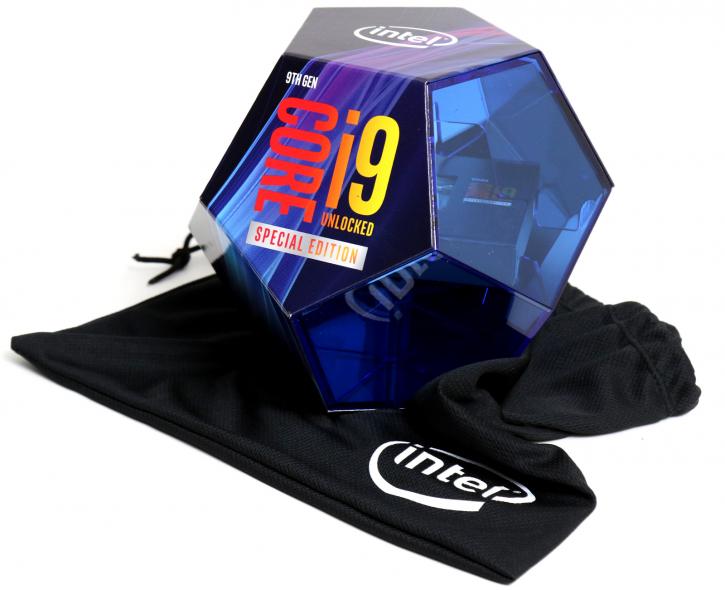Introduction
Intel Core i9 9900KS gets tested
Brace yourself, all cores at 5 GHz!
Intel released its flagship desktop processor in the non-HEDT segment. The 9900KS is their most premium Coffee Lake-S eight-core processor that has been discussed so abundantly. This little beast of a processor has eight cores, sixteen threads and gets an all-core turbo bin that reaches 5.0 GHz, yes on all cores. For many that is gaming nirvana whilst offering a balance of good performance and being a downright excellent gaming processor. This review will cover the new fastest Intel desktop processor that does not sit in the HEDT range. Yes, in this review we take the new flagship mainstream processor for a test-drive, meet the premium Coffee Lake-S eight-core processor that has been discussed so abundantly lately. This little beast has eight cores, sixteen threads and gets turbo bins that reach and hold 5.0 GHz.
The Core i9 9900KS is a much-debated answer to the AMD Ryzen 3700/3800X. It has eight cores, SMT is enabled thus you have sixteen threads and Intel would not be Intel if they did not make a move on high clock frequencies. That makes the Core i9 9900KS the enthusiast product sitting in their mainstream desktop processor series. I realize that is a weird line to read, but don't forget, there is a HEDT platform as well, with many multitudes of cores more seen from this 8-core part. So, as enthusiast-class as this processor is, it is segmented into a mainstream product line. The 9900KS should be seated into your Z390 motherboard. Six, eight, twelve and even sixteen-core processors in the mainstream desktop segment, thank AMD for that. Their aggressive product positioning with Ryzen and many cores forced Intel into fabbing more 'many' core processors creating a strong shift in the industry ever since the past three years. And you know what? It proofs again that competitions a very good thing as it makes companies go that extra mile. The now year-old Core 9000 range is extensive.
| Core | Cores / Threads | Smart Cache (MB) | Base Clock (GHz) | Turbo Boost (GHz) | Turbo Boost AllCore (GHz) | PCIe 3.0 Lanes | Memory Support | TDP (Watt) | Price (1Ku) |
|---|---|---|---|---|---|---|---|---|---|
| i9 9900KS | 8 / 16 | 16 | 4.0 | 5.0 | 5.0 | 16 | DDR42666 | 127 | $513 |
| i9 9900K | 8 / 16 | 16 | 3.6 | 5.0 | 4.7 | 16 | DDR42666 | 95 | $488 |
| i9 9900KF | 8 / 16 | 16 | 3.6 | 5.0 | 4.7 | 16 | DDR42666 | 95 | $463 |
| i9 9900 | 8 / 16 | 16 | 3.1 | 5.0 | 4.6 | 16 | DDR42666 | 65 | $439 |
| i7 9700K | 8 / 8 | 12 | 3.6 | 4.9 | 4.6 | 16 | DDR42666 | 95 | $374 |
| i7 9700KF | 8 / 8 | 12 | 3.6 | 4.9 | 4.6 | 16 | DDR42666 | 95 | $349 |
| i7 9700 | 8 / 8 | 12 | 3.0 | 4.70 | 4.4 | 16 | DDR42666 | 65 | $323 |
| i5 9600K | 6 / 6 | 9 | 3.7 | 4.6 | 4.3 | 16 | DDR42666 | 95 | $262 |
| i5 9600KF | 6 / 6 | 9 | 3.7 | 4.6 | 4.3 | 16 | DDR42666 | 95 | $237 |
| i5 9600 | 6 / 6 | 9 | 3.1 | 4.6 | 4.0 | 16 | DDR42666 | 65 | $214 |
| i5 9500 | 6 / 6 | 9 | 3.0 | 4.4 | 4.0 | 16 | DDR42666 | 65 | $192 |
| i5 9500F | 6 / 6 | 9 | 3.0 | 4.4 | 4.0 | 16 | DDR42666 | 65 | $167 |
| i5 9400 | 6 / 6 | 9 | 2.9 | 4.1 | 3.9 | 16 | DDR42666 | 65 | $182 |
| i5 9400F | 6 / 6 | 9 | 2.9 | 4.1 | 3.8 | 16 | DDR42666 | 65 | $157 |
| i3 9350K | 4 / 4 | 8 | 4.0 | 4.6 | 4.3 | 16 | DDR42400 | 91 | $173 |
| i3 9350KF | 4 / 4 | 8 | 4.0 | 4.6 | 4.3 | 16 | DDR42400 | 91 | $148 |
| i3 9100 | 4 / 4 | 8 | 3.6 | 4.2 | 3.6 | 16 | DDR42400 | 91 | $122 |
| i3 9100F | 4 / 4 | 8 | 3.6 | 4.2 | 3.6 | 16 | DDR42400 | 91 | $97 |
Core i9 9900K but different?
Three processors are spread out over three Core ranges (i5/i7/i9). The new flagship 9900KS is a processor with a boost allowance to a staggering 5 GHz, this time on all cores. I need to advance on that, as that all-core 5 GHz is merely 'continuous' as longs as your motherboard manufacturer will allow it. Most motherboards will allow 128 seconds, and then drop down in frequency top preserve TDP specifications. You can disable that and easily run 5 GHz all-cores all the time though.
What many have missed is that Intel tweaked another value, the base clock has been bumped up towards 4.0 GHz (coming from 3.6 GHz). So in both single-threaded and multi-threaded performance, Intel is squeezing more and as much out of the processor as possible. Is the processor otherwise any different you might wonder? No not at all, it is the very same architecture and in fact, the very same 14nm fabbed processor. The processor dies however have been binned, the best dies that can manage that all-core 5 GHz Turbo at the lowest possible voltage have been used. As a result of the increased base and turbo bins the TDP has, however, has risen towards 127W, coming from 95 Watts. The Core i9 9900 KS, as you can understand, will be available in limited numbers, backed by a single-year warranty.
What is competing with the 9900KS?
If we look at the processor one could argue that you need to compare the 9900KS with an 8-core counterpart from AMD. However, the 9900KS sells at 513 USD. Considering you can purchase the Ryzen 7 3700X for 329 USD that really isn't a comparison. The processor that its closest to the 513 USD price tag, is the Ryzen 9 3900X at 499 USD.


